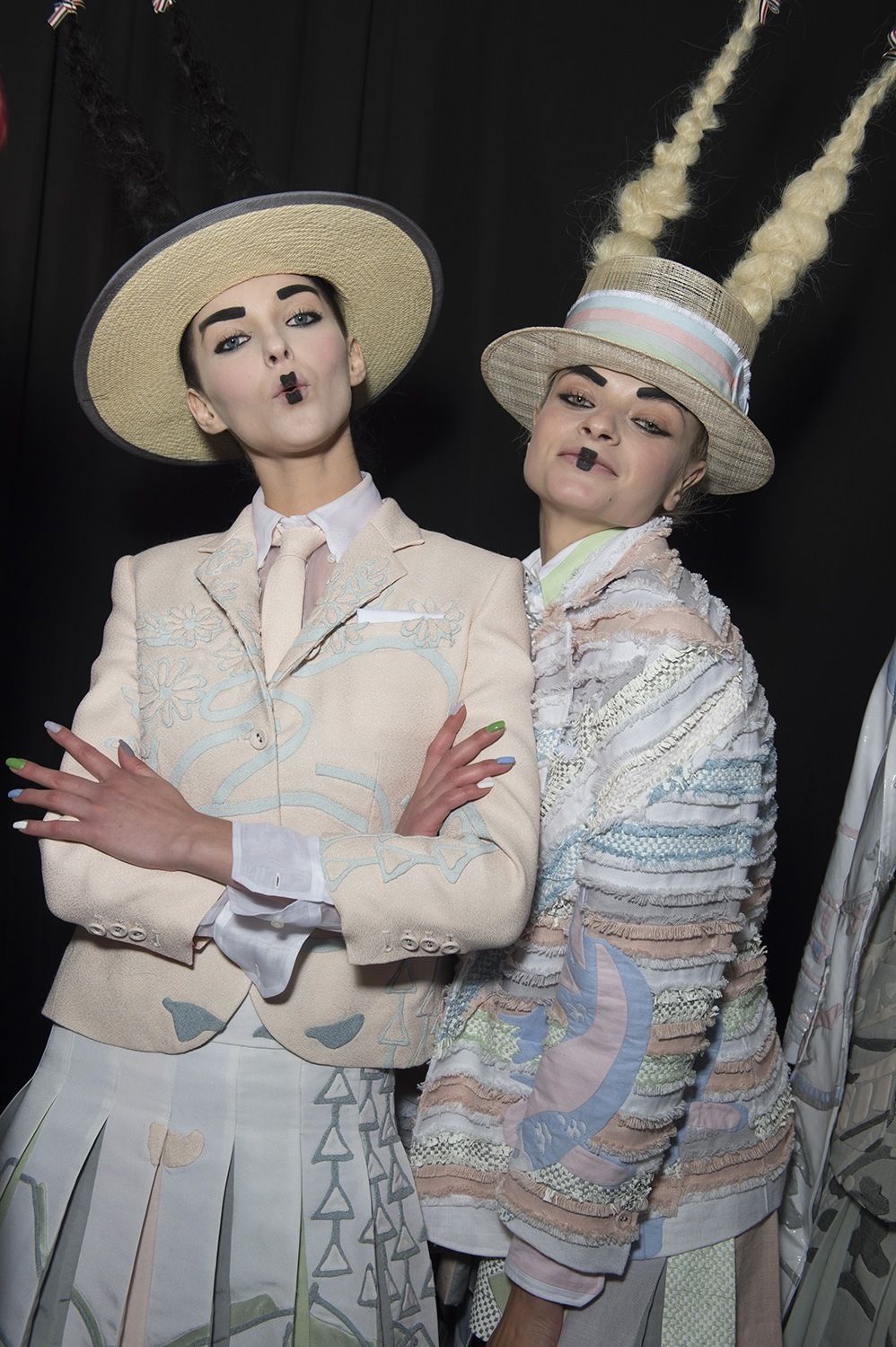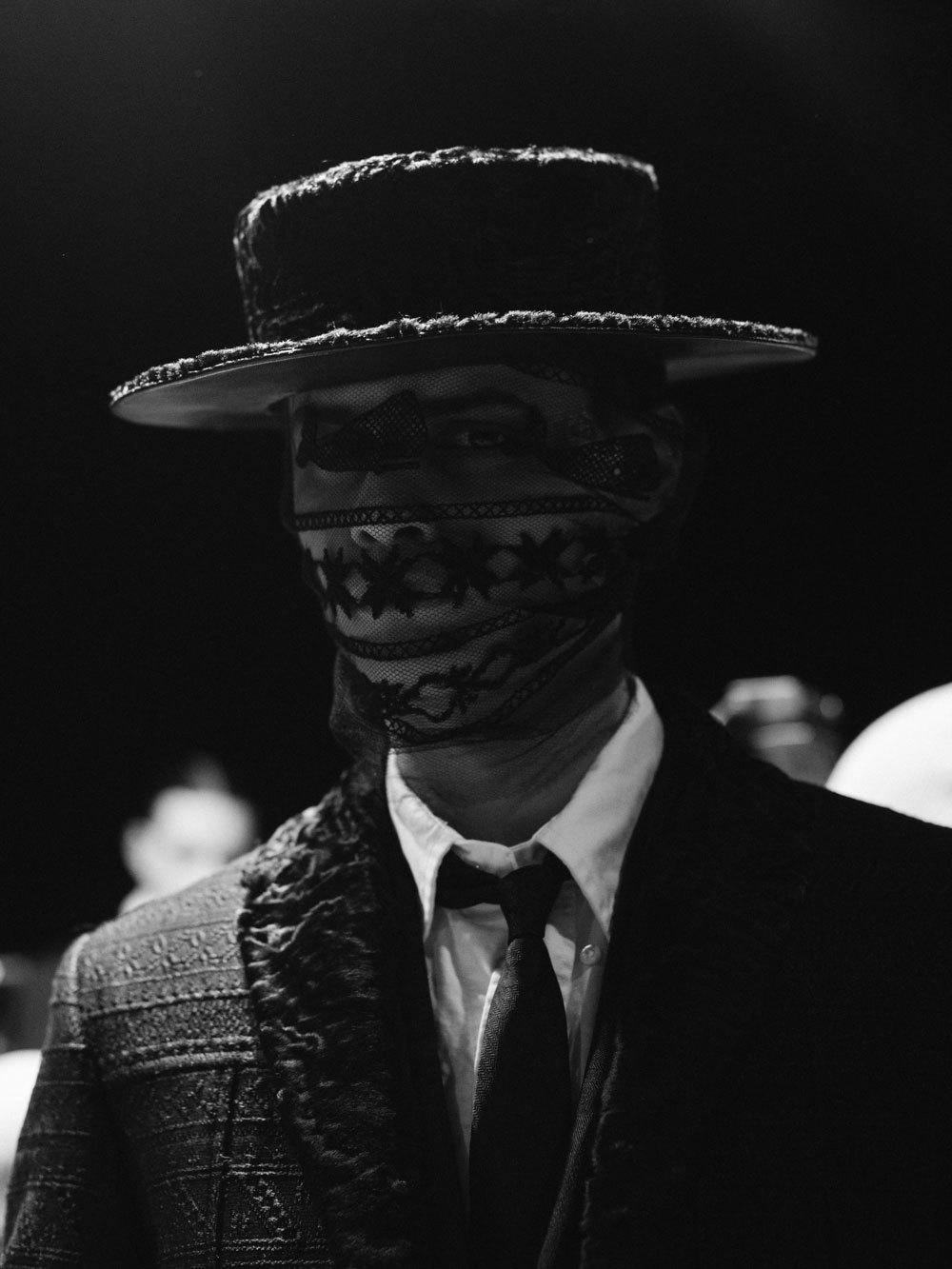Filmmaker Lisa Immordino Vreeland believes Thom Browne would make an excellent film director. Last night at Dover Street Market’s New York outpost, Vreeland premiered the first installment of her M2M documentary series Art of Style, and in a conversation following its debut screening, urged Browne to give it a go. Disappointingly, Browne — whose Art of Style film makes its online premiere on i-D today — didn’t express much eagerness to direct. But as Vreeland’s documentary on his life and idiosyncratic work reveals, the designer does draw influence from films: Luchino Visconti’s Death in Venice, Fritz Lang’s Metropolis, and, especially, Stanley Kubrick’s iconic movies. Vreeland intercut scenes from 2001: A Space Odyssey and A Clockwork Orange with archival footage from Browne’s most elaborate and imaginative fashion shows — demonstrating how the artists share such obsessive attention to detail.
Each season, Browne creates a unique world in which to debut his clothing; each runway show is a performance with an incredibly elaborate set. In September, his womenswear team converted its usual Chelsea venue into a 60s pool spa, complete with a loungey jazz soundtrack and disco ball. In February, Browne time-traveled to 1920s Central Park, constructing an idyllic park complete with snow-dusted evergreens and wooden benches. Though such theatrics are indivisible from his vision, Browne explained that, “as provocative as the ideas are, the most important thing — and I think the most fashionable thing — about what I do is in the quality that goes into everything that I make.” The three-legged trousers in his fall/winter 16 show were “as seriously made as a two-legged trouser. And I think that’s what fashion should strive to do more these days — pay more attention to the value of quality,” asserted Browne. “We live in a world where everyone wants everything so quickly and so fashionably. Sometimes, the most fashionable thing is the most classic thing.”

Art of Style touches on how Browne developed such classic sensibilities alongside his passion for forward-thinking film. Discussing his all-American upbringing in Allentown, Pennsylvania, Browne explained his parents emphasized two priorities: “school and sports.” Browne’s only family trip — to the 1976 Olympics in Montreal, with his six siblings — proved pivotal. Much like the Olympics, Browne’s work often considers the nexus between athleticism, uniform, and performance. He also draws from his father’s no-fuss style, and icons of American masculinity like Carey Grant and JFK. What makes Browne’s work so exciting and unique is his ability to fashion these straightforward touchpoints into something that blends such function with fantasy.
Browne explained last night that the impetus behind his knockout spring/summer 2011 offering — a memorable march of space oddities — emerged from visiting the French Communist Party’s headquarters. “The astronaut show began with the Oscar Niemeyer building in Paris. I saw the location and I thought, ‘This just feels so Stanley Kubrick; it feels so 2001’ so that’s where it went.” Yet no matter if it’s prim 60s spa queens, 19th-century Herman Munster jocks, or a class of goth geisha schoolgirls, Browne’s characters and the worlds he builds for them are as compelling as what he sees on the silver screen. “In a world where people see so much — and where they see so many collections in such a short amount of time — I want people to leave with a real impression and I want them to remember the collection,” Browne said. Vreeland’s film demonstrates how impossible they are to forget.

Credits
Text Emily Manning
